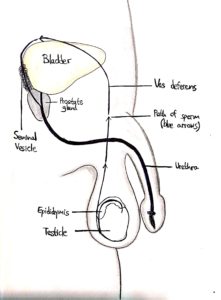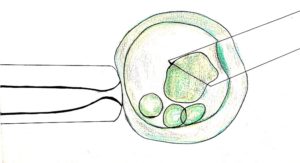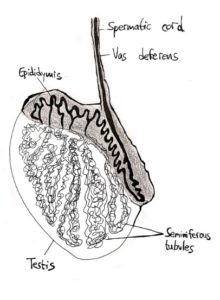A hydrocele, or a swollen scrotum, occurs when the sac surrounding the testicles fills with fluid, usually leaked from the belly to the scrotum. This can happen if there is inflammation in the testicular sac (for example, following injury), or following testicular or scrotal infection as well as hernia surgery. It may also occur if there is a blockage in the spermatic cord. Usually, a hydrocele is not dangerous and does not affect a male’s fertility.
A hydrocele is a relatively common condition in baby boys, occurring at a rate of about 10%, and will usually correct itself within a year. Adult hydroceles are more rare, occurring in only 1% of males, and will usually disappear within 6 months.
A hydrocele can be diagnosed by a physical exam and ultrasound imaging. The swelling may occur on one of both sides of the scrotum, and, while uncomfortable, is usually painless. If one is experiencing both swelling and pain, it may indicate a more serious condition such as an underlying infection. Regardless, a doctor will usually perform blood and urine tests to check for any infections.
If the hydrocele is painful or becomes too large, it may be treated surgically. The surgery involves a small scrotal incision and drainage of excess fluids. It is usually an outpatient procedure performed under local anesthesia, and the patient can go home the same day.





